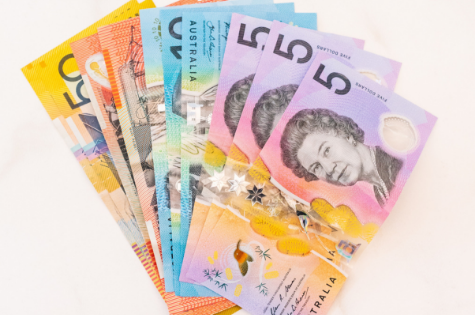“Do you pay your child pocket money yet?” “How much do you pay?” Ahhh the great pocket money debate has raged for generations, uniting and dividing dinner table conversations and mothers groups alike. Everyone has a different opinion on when to start paying it, or how much is too much. But one thing all parents can agree on is that it’s never too early for kids to have a basic understanding of money.
As society becomes increasingly cashless, it can be really tricky for kids to grasp the concept of money. Despite what my 8 year old still insists, money doesn’t come from a magical “tap and go” card or a hole in the wall; it has to be earned, spent and saved. Even as adults, plenty of us also can find it hard to achieve this balance. Do you give in to temptation and blow all your pay in one go, or slowly save up for something over time? Pocket money encourages kids to start making these decisions for themselves.
When to start
This depends on how well your child understands money in general. They should know the difference between dollars and cents, and how much value each coin or note holds. They’re not going to get far at the school canteen with a five cent coin, but a five dollar note will get them a sausage roll and a drink.
They should also know the difference between spending and saving. Teach your kids that they can use their money to buy things at the shops, but they should also put some aside in a savings account. Make sure they know that if they spend the entire amount in one go, they’ll have to wait until next week before receiving any more. This can be a tough one for younger kids to understand, so you will have to be patient and possibly endure many conversations about why it’s fair and no they can’t pay you back next week.
How much to give
This truly is a case of age before beauty! Finder research shows that the eldest child receives around $12.90, the second child receives around $9.58 and the youngest just $7.73 on average per week. But keep in mind that there’s no right or wrong answer here. How much you choose to give should be a personal preference and will depend on your household budget and what you consider to be a reasonable amount (though your child might have other ideas!).
Have a think about what you expect your child to pay for as well. Some kids are only expected to cover things like gifts, special outings and toys. Others, especially if they are a bit older, might be made to pay for “grown-up” things like public transport, mobile phone credit and school lunches – they might need a little bit extra if this is the case.
How to start saving
Once your kid starts to receive pocket money, it’s a good idea to open a savings account. You’ll be amazed at how much interest can accumulate over time. For example, if a six-year-old child earns $12.90 per week, and banks half that amount in a high-interest savings account with a rate of 2.80%, they will have saved almost $4,000 by the time they turn 18 – no need to rely on the bank of mum and dad!
Opening a bank account with a debit card attached can also help kids to understand the connection between their own money and cash. Being able to see how a card transaction affects their account balance is an important part of money management, especially in an era of digital banking.
So, when it comes to pocket money, there’s no hard and fast rule. Regardless of what other kids might receive, it’s important to remain within your own budget and don’t pay more than you can afford. A weekly allowance may not seem significant on the surface, but the lessons your child can learn through managing their own money really are priceless.

















__small.png)










